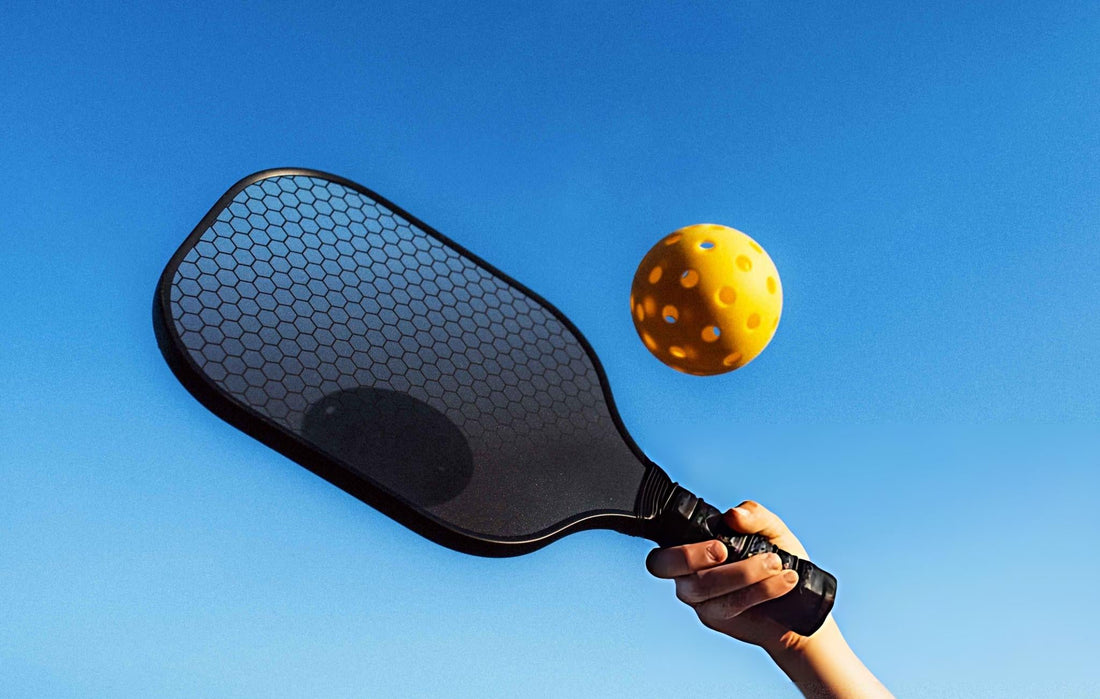In Karachi, the number of people picking up a pickleball paddle is growing fast. The sport has caught on with players looking for something fast, fun, and easy to learn. As outdoor weather starts to cool down in late October, more courts fill up with weekend games and evening matches. But what many don’t realize is this—if your gear doesn’t fit your style or play habits, it can slow down your game before you even start.
Whether you’re trying pickleball for the first time or already play regularly, your hands deserve better than a paddle that gives you wrist pain or misfires every shot. The right pickleball equipment in Karachi isn’t just about the latest model or color. It's about whether your paddle actually keeps you in rhythm. If your hits feel clumsy or you get tired too quickly, your gear might be part of the problem.
Cricket Habits That Don’t Translate to the Pickleball Court
Cricket players coming over to pickleball often carry habits from the pitch to the court. This isn’t a bad thing—it just needs a few adjustments. Muscle memory built from holding a bat for long innings can make players squeeze a pickleball paddle too tight. That leads to slower swings and missed hits during fast rallies.
Some cricket players also prefer using heavier bats for power. When they look for the same thing in pickleball, they might choose a paddle that’s too weighty for quick net action. A heavy paddle makes volleys late and turns forehand flicks into awkward scoops.
Another mismatch comes from grip style. Cricket bats are thick and long, while pickleball paddles are short and flatter. Holding them the same way can throw off shot angles or make wrists feel tired within a few games. A few small tweaks to the way a handle feels in your hand can make a big difference.
How Poor Padel Choices Sneak into Pickleball Play
Players who come from padel sometimes bring their gear mindset along. While padel and pickleball sound similar, how they feel during play is very different. The two sports demand different paddle builds, grips, and response times.
A padel racket is shaped for striking balls off walls and creating spin in tight rallies. But pickleball courts are open, fast, and without rebound walls. If someone uses those same habits or even a similarly styled paddle, the familiar comfort can backfire. You’re swinging the same way, yet the ball’s reaction feels off or weak.
Another problem we’ve seen is players bringing over light, thin paddles made for padel flicks and float shots. These don’t always hold up during quick-drive exchanges at the net. When the paddle starts slipping or twisting in the hand from too much motion, it's likely the grip isn’t paired well with pickleball play. For solid rallies and better resets, the balance point and face surface have to meet the moment.
Some of the most popular pickleball equipment in Karachi now includes cushioned grips and mid-range paddle weights, which help players adjust quickly when switching from padel or cricket.
Signs Your Pickleball Gear Is Wrong for Karachi Conditions
It doesn’t take long to notice when gear isn’t working, especially once Karachi’s outdoor season kicks in and matches last longer. Overused or mismatched paddles start to act up fast. You might feel vibrations in your hand after every shot, even though you’re sure you struck the ball clean.
Older paddles or cheap builds quickly wear down under Karachi’s climate. Dust, heat, and evening humidity can get into small spaces on your grip, making it slippery or rough. Playing in these conditions over time might cause the paddle face to dull. That changes how the ball bounces off and makes each swing harder.
If you're midway through a match and your arm feels sore or your wrist feels tight, it’s time to check your equipment. The size or shape of your paddle could be forcing your muscles to work harder. People talk about footwork a lot, but sometimes it’s the wrong paddle causing the trouble.
For Karachi’s conditions, picking pickleball equipment in Karachi with sweat-absorbent grips and hard-wearing surfaces can reduce the wear and tear caused by extended play in local weather.
Cricket Gear Lessons That Help Improve Pickleball Comfort
There’s a lot that cricket teaches us—even when we step onto a different kind of court. Take comfort grips, for example. Cricket players are used to shaping their bat handles with tape, gloves, and overgrips. That awareness of how the hand connects with the equipment is huge in pickleball too.
Players with a cricket background usually know how to send power through a well-timed shot without overreaching. That same rhythm helps in pickleball, as long as your paddle doesn’t throw off your timing. If your wrist feels jammed or you’re hitting off-center too often, think back to how you adjust your bat between overs. Quick changes to grip thickness, wrist bands, or handle wraps can bring that same feel into each pickleball match.
Another important thing is being able to read when it’s your grip—not your skill—that’s off. A cricket player might sense when the bat is slipping a little. That instinct can stop unforced errors on the pickleball court too, as long as the paddle responds the way your hand expects.
How Padel Players Can Sharpen Their Pickleball Game
Padel is fantastic at teaching players to use their wrists and work off instinct. But in pickleball, the swings are shorter, the positioning is tighter, and the pressure at the net is quicker. That means a few style tweaks are needed if you’re coming over from padel.
For one, padel rackets are rounder and often thicker. So when a player used to padel grabs a flat-faced pickleball paddle, it feels strange at first. The nerve reactions are different. Even more, the softness of padel paddles can make someone misjudge power needed for pickleball shots. This leads to popping the ball up or hitting it too short.
Changing from a soft-edged grip to a firm, tacky texture can bring the feel back into your hand. Getting the grip length right matters too. A padel player who lands on a paddle with a handle too long or short might start adjusting mid-match—and that messes with reaction time.
Now’s a good time to sit back and think about whether pickleball shots feel natural yet. If you’re still using your same padel swing with a pickleball paddle, something might be off in your gear. That mismatch could be costing you more points than you think.
Stay Sharp by Listening to Your Gear
Good gear doesn’t distract you. It helps you play longer, feel better, and notice fewer aches at the end of a tough match. When the paddle feels like an extension of your hand, the game itself gets more enjoyable—and easier.
If you're playing pickleball regularly in Karachi and your gear isn't keeping up, the signs usually show early. Missed hits, wrist tightness, shot fatigue—many of those can come from grip width, paddle balance, or just wear from local court conditions. Whether you're coming from cricket or padel, your past experience can help you recognize these signals quickly.
Adjusting paddle, grip, and feel for your game won’t just fix problems. It’ll help you build muscle memory that actually works for your style, your pace, and the Karachi climate. Once the gear feels right, there’s a lot less worry—and a lot more wins.
If your paddle keeps slipping or your shots feel off under Karachi’s evening skies, now’s a good time to rethink your setup. The right grip, balance, and paddle face can change how you move and how long you stay sharp on the court. We’ve seen how backgrounds in cricket or padel shape what players look for, but none of that works if your gear wears out fast in this weather. Take a look at our full range of pickleball equipment in Karachi and let us know if you need help finding the right fit. At Tornado Sports Company, we're here to make sure your setup works as hard as you do.

